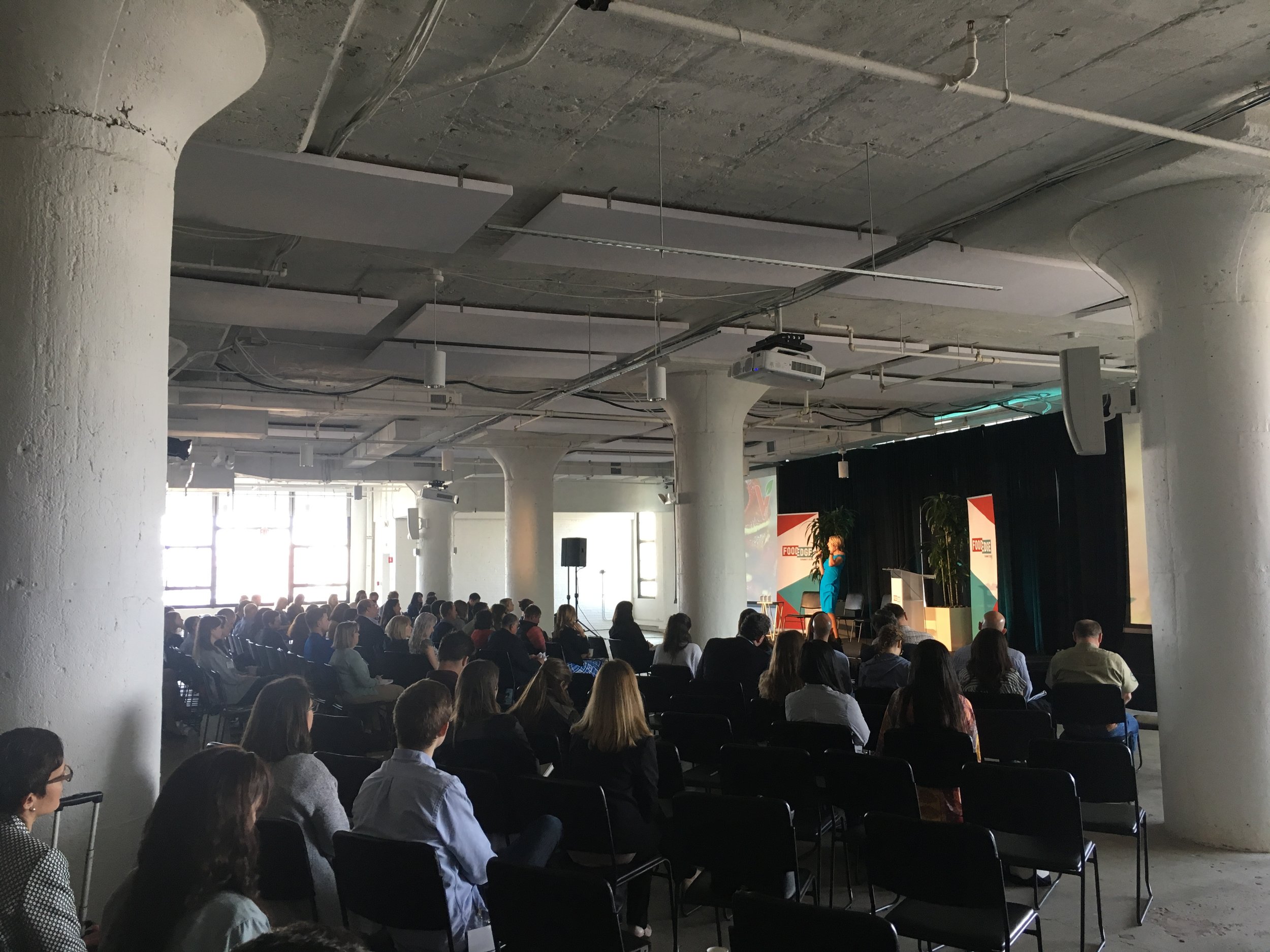5 Disruptive Takeaways from Food Edge 2018
/Here at Branchfood, we like to say, “Innovation will fix the food system.” Another way to put this is, “Disruption will innovate the food system.” Last week, innovation and disruption were on full display at the first-ever Food Edge Summit, a two-day “meeting of the food minds” in Boston’s Seaport District that brought together the entrepreneurs, scientists, thought leaders, and chefs who envision a food system that is safer, tastier, simpler, and better for all.
If you were among the hundreds who packed into the more than 20 talks and panels at Food Edge, you left with a notebook full of inspiration and tips -- and hopefully a stack of business cards -- to give new energy for your entrepreneurial food journey. If you couldn’t join us, we took the liberty of condensing roughly 16 hours of content and networking into five key takeaways. This is obviously not a comprehensive list, but our hope is that it provides the spark a food disruptor needs -- and, hopefully, entices you to join us at Food Edge 2019!
Food disruption starts with people.
In the very first session at Food Edge, Jamie Scheu and Ben Little from presenting sponsor Hill Holliday shared from their well of experience in food marketing and design thinking. “Start with people,” Ben told us, “then come up with ideas and develop prototypes. Think from the lens of human moments.” The best products -- the ones that simplify a common action in the kitchen or put a healthy meal on the tables of busy families -- began with customer insights rather than assumptions on the part of the entrepreneur. Remember: start with humans!
Everyone is talking about food innovation -- even (maybe especially) big retailers.
You might think larger, legacy retailers like supermarket chains are disinterested in innovating. After all, the general layout and product selection at most large chains has remained unchanged for decades, even as the number of shoppers holds steady and ticks upward. But Craig Boyan and Scott Mitchell of Texas supermarket giant H-E-B told us otherwise. “Why do retailers care about innovating?” Boyan asked. “We can only beat Walmart and Amazon by innovating.” H-E-B is doing this in its stores by selecting better ingredients, making organics affordable for all, offering products you can’t get anywhere else, and ultimately capture the lucrative Texas market. In doing so, H-E-B partners with smaller brands to help them grow, manage their commoditization cycle, and push them to continually innovate. Remember: don’t shrug off supermarkets in your push to evolve the system!
It’s never too late to become an entrepreneur!
Keynote speaker Heather Mills opened Day 2 by telling about her own journey from a career in international modeling through a near-death experience to running one of the world’s oldest and largest vegan foods brands, VBites. In her touching and at times funny talk, Heather made an impassioned case for the role of plant-based eating in our food future (“instead of vegan hippie, it should be vegan hip”) and pulled back the curtain on some of VBites’ strategies and principles as she prepares to expand to the United States in the next few years. Remember: maybe your best idea or most successful business is ahead of you!
Everything we do is a work in progress.
Perhaps nowhere is this sentiment put into more meaningful action than at Boston’s Chew Labs, which is bringing a culinary and scientific lens to some of the most promising food products being developed today. Chef Adam Melonas, who previously co-founded UNREAL candy, shared his belief that food innovation is as much about process as it is products. At the same time, says Melonas, “comfort is the enemy of innovation” -- meaning we should always be striving to make our product or service even better. Remember: don’t get comfortable!
Personalized nutrition is the next big thing in food...but it’s still a diet.
The emerging frontier in food and nutrition, experts tell us, is personalized nutrition: products that often tap into our unique DNA and family histories to tell us what we should or shouldn’t eat. But these products, at their core, are still just diets, according to Thomas Hayes, research associate with Lux Research. Hayes said that to keep a personalized nutrition product from going the way of defunct fad diets like Nutrisystem, Atkins, and SlimFast, it must traffic in credible science; have value alignment with the consumer around health/wellness, convenience, price, experience, taste, and safety; and provide constant guidance to the consumer as he or she uses the product. The personalized nutrition industry offers many business opportunities, but only if the product or service ticks these three blocks. Remember: the trash heap of history is filled with fad diets -- don’t become one of them!
This is, of course, an incomplete list, but please do share your big takeaways in the comments below or in our social media feeds. If you made it to Food Edge, we hope it was a fruitful and inspiring time -- no matter how you’re working to influence our industry. And if you weren’t there, will you consider joining us next year?
Until then, never stop innovating. It’s the only thing that will fix our food system.
























